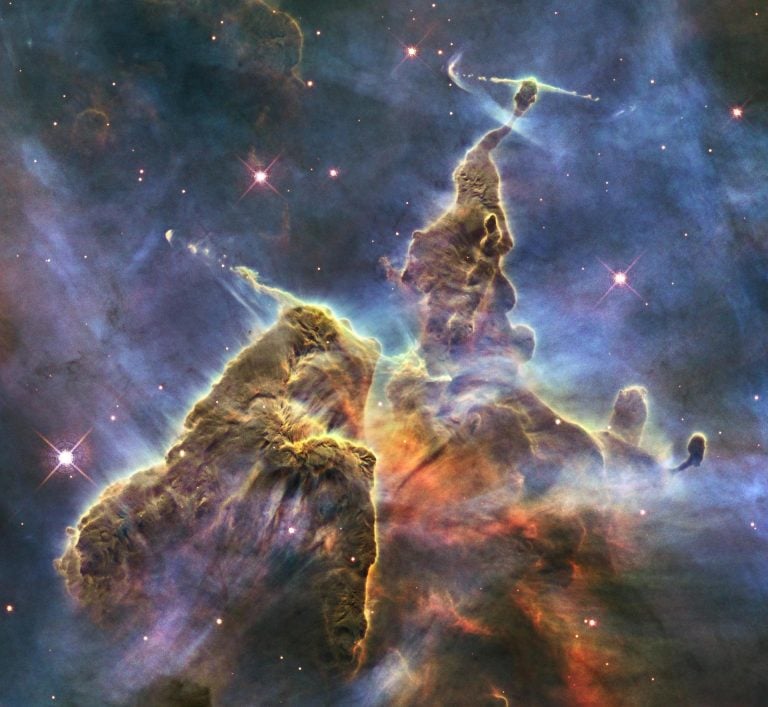
Hubble Space Telescope: A Legacy of Cosmic Discovery
April 24, 2025, marks the 35th anniversary of the launch of NASA’s Hubble Space Telescope, an observatory that has redefined humanity’s understanding of the cosmos. Since its deployment in 1990, Hubble has provided breathtaking images and groundbreaking discoveries that have shaped modern astronomy. As one of the most significant scientific instruments ever built, Hubble continues to capture the imagination of people around the world, earning the nickname “The People’s Telescope.”
Hubble’s Unique Perspective
Unlike ground-based telescopes, which are affected by Earth’s atmosphere, Hubble orbits in low-Earth space, free from atmospheric distortion. This allows it to observe celestial objects with unmatched clarity in ultraviolet, visible, and near-infrared light. From planets in our own solar system to galaxies billions of light-years away, Hubble’s ability to see deeper into space has expanded our understanding of the universe’s structure and evolution.
Milestones in Discovery
Over the past three and a half decades, Hubble has revolutionized astronomy with numerous discoveries, including:
The Accelerating Expansion of the Universe – Hubble played a crucial role in discovering that the universe’s expansion is speeding up, leading to the concept of dark energy.
Exoplanet Atmosphere Analysis – It has detected water vapor, chemical compositions, and weather patterns on planets outside our solar system.
Mapping the Universe’s Evolution – Hubble’s deep field images have allowed astronomers to study galaxies from the early universe, revealing their formation and development over billions of years.
The Life Cycle of Stars – From the birth of stars in nebulae to their explosive deaths as supernovae, Hubble has provided stunning visual evidence of stellar evolution.
Exploring Our Own Solar System – Hubble has captured detailed images of planets, moons, asteroids, and comets, revealing dynamic activity and atmospheric changes.
Servicing Missions and Longevity
Despite an initial setback due to a flaw in its main mirror, Hubble’s mission was salvaged by a series of space shuttle servicing missions, which repaired and upgraded its instruments. Thanks to these efforts, Hubble remains operational and continues to deliver invaluable scientific data, making it one of NASA’s longest-running and most successful missions.
Hubble’s continued success is also due to its collaboration with new observatories. The James Webb Space Telescope (JWST), launched in 2021, and the upcoming Nancy Grace Roman Space Telescope are expanding upon Hubble’s legacy, offering complementary capabilities that will further our cosmic exploration.
Hubble and the Human Connection to the Universe
Hubble has not only advanced scientific knowledge but also deepened our emotional connection to the stars. Its images of distant galaxies, nebulae, and planetary systems inspire curiosity and wonder, reinforcing humanity’s place in the vast cosmos.
One way people have connected personally with the stars is through the tradition of naming a star. Since 1979, International Star Registry® (ISR) has offered individuals a unique way to commemorate special moments by naming a star. The stars named through ISR are derived from the Hubble Guide Star Catalog (GSC), a publicly available catalog of the stars, creating a tangible link between stargazers and the iconic telescope. ISR permanently records all of the star names in its own unique catalog, which is the only permanent, published catalog of named stars in the world. The star names assigned by International Star Registry are intended to be a memorable and lasting gift. These star names are not used by astronomers and ISR is not affiliated with NASA. Each star named by ISR is unique and recorded forever.
Celebrating 35 Years of Hubble
In honor of this milestone, NASA and the European Space Agency (ESA) will launch a series of public initiatives and events throughout 2025. These will include special educational programs, live-streamed discussions with astronomers, and the release of newly processed Hubble images that showcase its vast contributions to science and exploration.
Looking Forward
As Hubble enters its 36th year in space, its mission remains as vital as ever. Though newer telescopes will eventually take the lead in cosmic exploration, Hubble’s legacy will continue to influence astronomy for generations to come.
Whether through Hubble’s dazzling images, its historic discoveries, or the personal connection of naming a star, the telescope has cemented its place in both scientific history and human culture. As we celebrate 35 years of looking deeper into the universe, we are reminded of the endless possibilities that lie ahead in our quest to understand the cosmos.
Happy 35th anniversary, Hubble! Here’s to many more years of discovery and wonder.
Please be advised that, despite our best efforts, International Star Registry – Name a star provides astronomical and astrological content for entertainment purposes. We cannot guarantee the accuracy of all information given.
